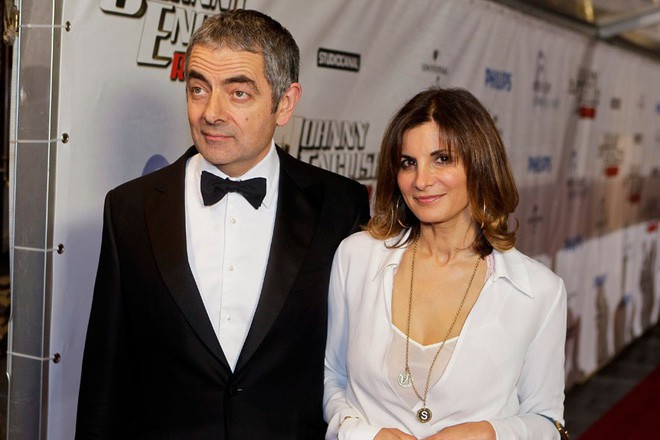The headline we keep writing about our heroes
The modern internet loves a “last photo.” We pin a narrative to a single frame: a smile that looks thinner than we remember; a posture we decide is frail. For Rowan Atkinson—whose face has been a global instrument of joy for more than three decades—those narratives multiply because his work is so intimately tied to expression. We don’t just watch Atkinson; we read him. And when a 70-year-old legend dares to look 70, the parasocial imagination races to fill the silence with rumor.
This essay pushes back. If there’s anything “shocking” left to say about Rowan Atkinson, it’s not a conspiracy. It’s the scale, craft, and quiet philosophy behind a career that turned near-silence into a universal language—and the way he insists, gently but firmly, on letting the work speak for itself. (He has long treasured his privacy and generally declines personal questions in interviews.)

How a near-silent character conquered the noisy world
Atkinson’s ascent didn’t follow the usual stand-up-to-sitcom pipeline. He studied electrical engineering—first at Newcastle University, then for a master’s at Oxford—before refining a precision approach to comedy that feels almost engineered: calibrated beats, timed blinks, micro-expressions that detonate into laughter. Out of that discipline came two poles of his fame—Edmund Blackadder, razor-edged and verbal, and Mr. Bean, almost wordless and gleefully chaotic.
The impact is measurable. At its peak, Mr. Bean drew around 18 million viewers in Britain and blossomed into a global phenomenon, with the series sold into hundreds of territories and later expanding into films and an animated series. The near-silent format made the show borderless—a passport stamped on every continent.
The method behind the mugging
To dismiss Atkinson’s physical comedy as “faces and flailing” is to miss the method. Classic Bean set-pieces—changing into swim trunks without removing trousers, dueling with a bee, sabotaging a church service with a cough drop—are silent clockwork. Gags unfold like experiments: set the conditions, isolate the variable (Bean), observe chaos. The joke is rarely just what happens; it’s how precisely it happens.
That precision is the bridge between Atkinson’s engineering training and his artistry: an attention to inputs (props, space, eyelines), timing tolerances (beats and holds), and failure modes (what does the character do when a plan collapses?). The result is laughter that translates in Beijing as readily as in Birmingham—not because it’s “simple,” but because it’s exact.

The cost of being universally legible
Physical comedy looks effortless and therefore is not. It demands control, repetition, and the humility to be ridiculous on cue. As audiences aged with Atkinson, we projected our own timelines onto him: surely this kind of work must be exhausting; surely the mask must slip. But here’s what we actually know: he has continued to work selectively across formats (from Johnny English to dramatic turns in Maigret to newer projects), and he guards the sanctity of his off-stage life. The gap between our appetite for intimate access and his commitment to privacy is where rumor thrives—and where we, the public, must learn restraint.
“What his wife revealed…” (and what she didn’t)
The viral framing—“what his wife revealed in the quiet moments”—suggests a confessional that doesn’t exist in the record. Partners and family around Atkinson rarely speak publicly; profiles that do gain access emphasize his preference to keep the personal personal. The real “quiet revelation” is this: not everything must be content. Sometimes the kindest—and most radical—act in celebrity culture is to close the door and let private life be private.
Mr. Bean and the math of universality
Why did Bean travel so far, for so long? Three structural reasons:
-
Language minimization. By stripping dialogue to the bone, Atkinson and his collaborators removed the error bars of translation. Physical intention reads instantly, everywhere. (Mr. Bean’s global reach across 200+ territories is widely documented in reference works and trade reporting.)
-
Character invariance. Bean is a stable algorithm: adult body, childlike heuristics. Put him in any environment—exam hall, holiday, department store—and the outcome is a predictable cycle of curiosity → mischief → escalation → faux-penitence. We love him because we know him.
-
Ethical elasticity. Bean is harmlessly selfish. He cheats a little, lies a little, breaks things a little. Crucially, the show rarely punishes him with real-world consequences. That moral softness is why global families kept tuning in; it’s slapstick without cruelty.
Aging on camera, aging in public
At 70, Atkinson confronts not mortality but mythology. The internet’s most persistent mythology about him has been death and illness hoaxes, sometimes monetized by scammy ads. Fact-checkers have swatted these down for nearly a decade, often reminding readers that if such a monumental event had occurred, it would be everywhere in mainstream media within minutes. The pattern is instructive: we’re susceptible to hoaxes precisely because Atkinson’s face is so bound up with our childhoods. We click to see if our past is still safe.
The real legacy (and the real ask)
Strip away the rumor and the tabloid heat and you’re left with something sturdier:
-
A career that fused engineering-level precision with bravura clowning.
-
A body of work that reached staggering audiences and still pulls new viewers into its orbit.
-
A creative philosophy that trusts craft over confession—that insists the art, not the artist’s private life, is the public offering.
If we must be “speechless,” let it be because we are once again floored by the engineering of a joke that lands without words. If we must cry at “rare images,” let it be from laughing too hard at a man who—through timing, control, and a face that seems to contain the entire alphabet of human feeling—taught the planet to giggle in the same language.
Epilogue: the smile isn’t fading—it’s evolving
The face changes; the craft endures. Whether Atkinson chooses more Bean, more drama, or simply more quiet, the honest way to honor him is to resist the click-bait eulogies and grant him what his work has always granted us: grace without interrogation. And if you need one last “shocking” revelation, here it is—Rowan Atkinson’s greatest trick was never the rubber face. It was the discipline behind it.





